First steps - How to use Matrix?
Members and members of the Darmstadt University of Applied Sciences (students as well, of course) use their University Login to communicate with members of the Darmstadt University of Applied Sciences, other universities, and other Matrix users (e.g. academic partners) via chat and audio/video telephony in compliance with the relevant legal and regulatory provisions on data protection and IT security.
The use of the Element desktop client is recommended, because this avoids most problems users have with Matrix, e.g. end-to-end encryption.
Downloads for: Windows macOS Linux
After a desktop installation, make sure to use the existing account with the h-da login and do not create a new account on another server. This example uses Element:
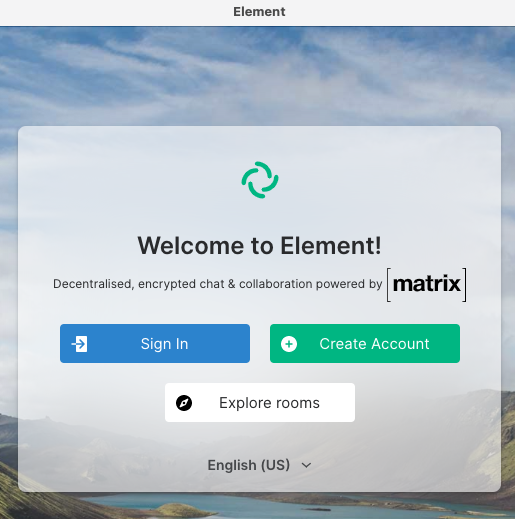
Click on Edit. This way, the proper server is used.

Now specify the home server manually: matrix.fbi.h-da.de
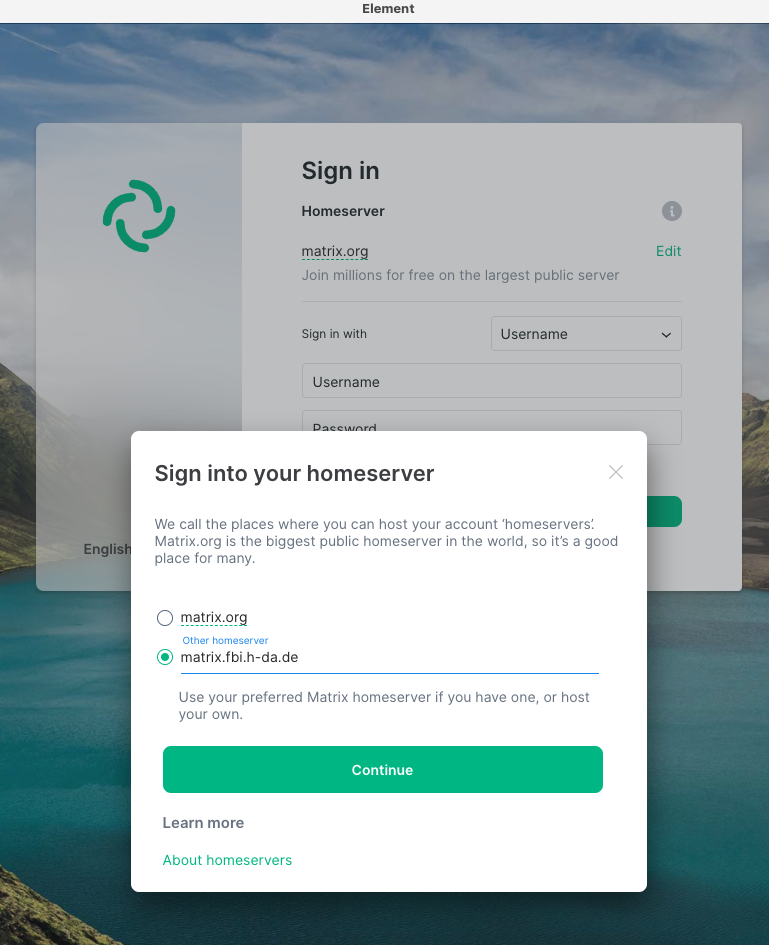
The drop-down menu “Sign in with” should be left at “User name”. Afterwards, login with the h-da login and password.
Username: university login (only the h-da-login, no e-mail address!)
Password: university password
An alternative login, e.g. using the e-mail address, is NOT possible during the first, initial login, only after the second login.
After the first login there is also no e-mail / confirmation mail.
Analogous to e-mail addresses, this results in matrix addresses with the following structure:
@h-da-login:matrix.fbi.h-da.de
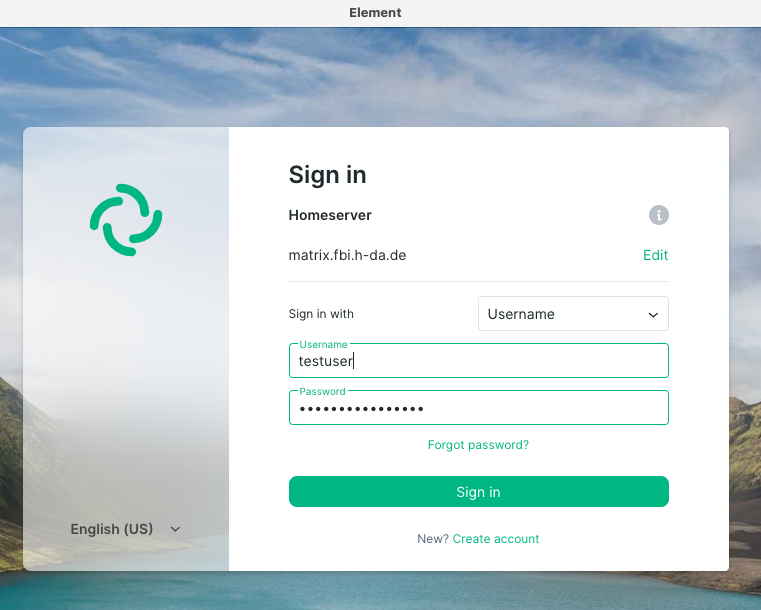
Convenient use of end-to-end encryption (E2EE)
Matrix not only encrypts transports to and from the home server (in the data center of Darmstadt University of Applied Sciences) but also allows the use of end-to-end encryption (E2EE). For this, cryptographic keys have to be exchanged between all devices that want to send end-to-end encrypted messages. This technical necessity sounds and is complicated, but has become very convenient for the users. The many cryptographic keys created by the client are stored on the respective device. If, for example, this is a tab in a browser, there is a risk that this tab will be closed unintentionally: all encrypted contents are no longer readable. To prevent this from happening, a key protection is offered on the home server of the Darmstadt University of Applied Sciences. All cryptographic keys that are protected with a security phrase (or security key that is calculated from it) are stored in encrypted form on the server.
It is highly recommended to use this key backup (with a secure security phrase which is NOT your University password) and read on at Other important settings!
If loggiing in for the first time or again without having made any backup of the security key yet, then the following window will be shown:
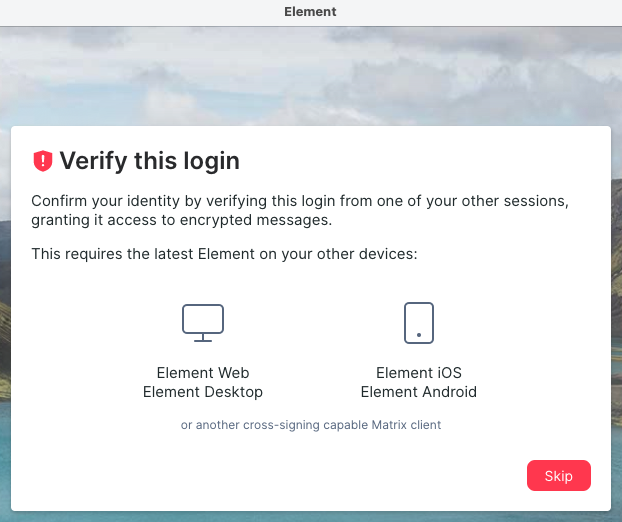
“Skip” this, because there is no security key yet:
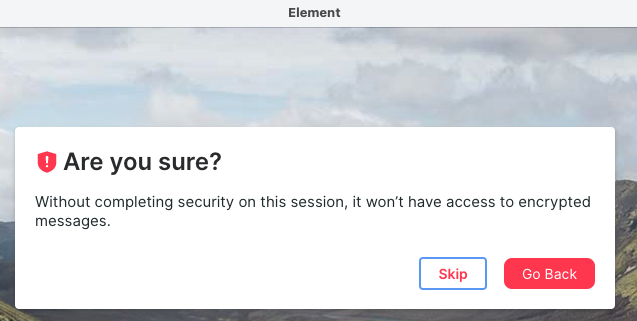
Key protection is highly recommended for worry-free end-to-end encryption. Therefore choose “Settings/Security & Privacy”. Please look for “Encryption” and choose “set up” secure backup.

Alternatively, choose “Security & Privacy” by clicking the downward pointing triangle symbol right next to the username.
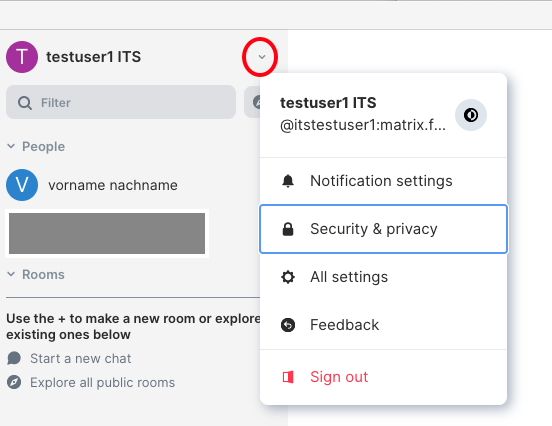
Setup the key backup in the next window:
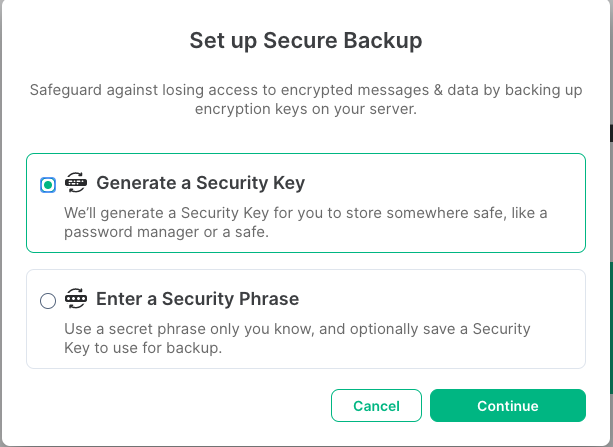
Choose “Generate a Security Key” and “Continue”, to let the security key appear in the next window. This should be kept save and retrievable as an emergency key.
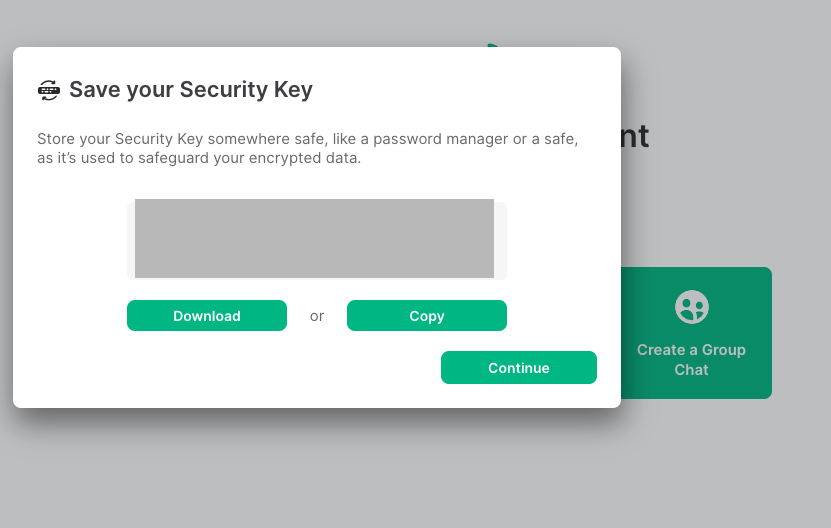
With each logout from element and re-login or new login to element on a new device, the security key is prompted. Without this key, there is no access to old encrypted chats.
Alternatively Choose a strong security phrase (but not the h-da password!). Furthermore, the security key is generated in addition to the security phrase and should also be kept safe and retrievable as an emergency key. This security phrase will always have to be entered if keys are to be synchronized with the key backup.
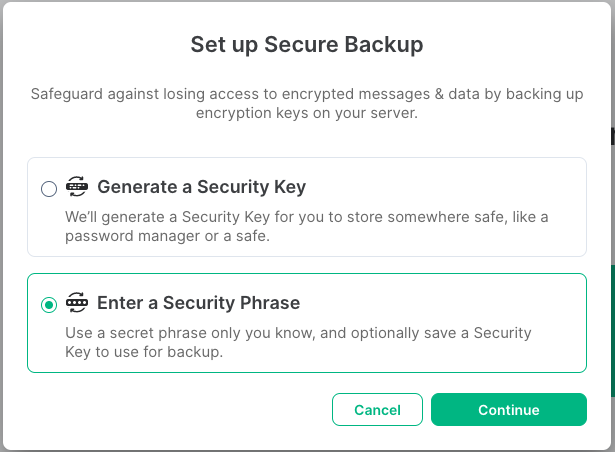
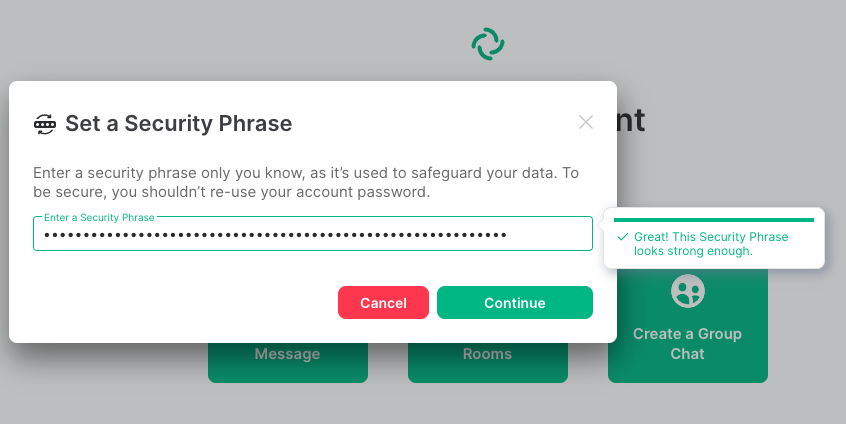
Confirm the passphrase for the security key:
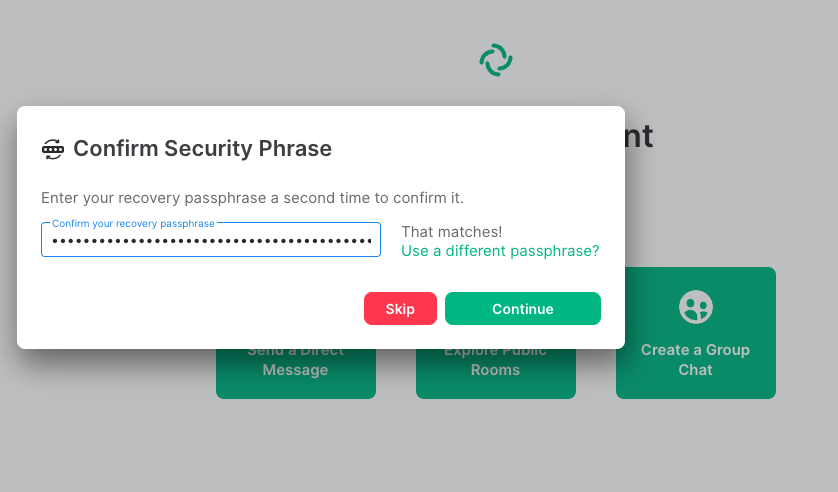
The next window shows the security key, which should be kept safe and retrievable together with a strong passphrase.

Last but not least, the users identity may need to be confirmed with the element-login-password.
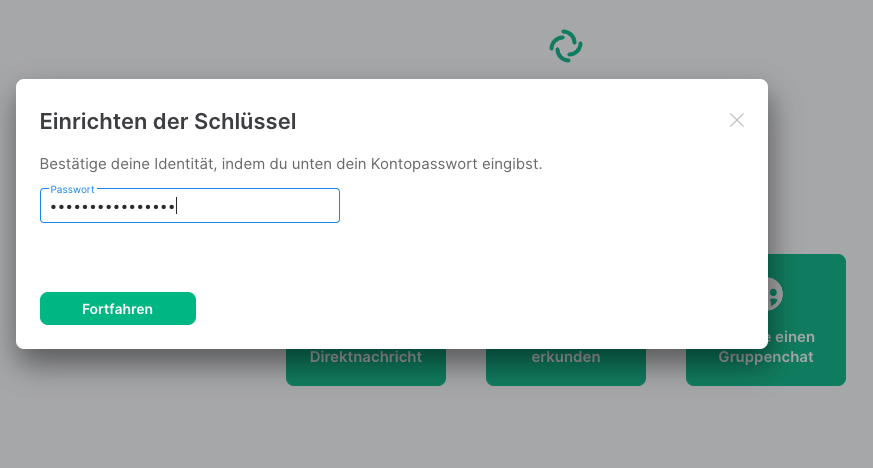 (sorry for no english screenshot)
(sorry for no english screenshot)
After logout from Element and logging in again or a login to Element with another device, then the security key or passphrase must be entered.
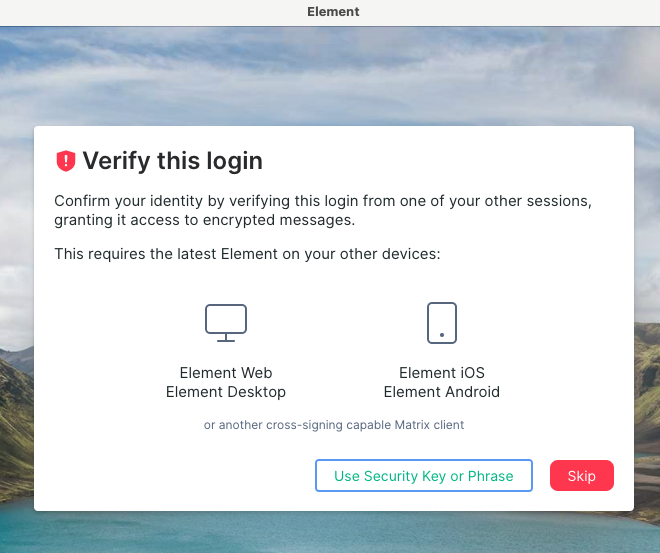
When entering a passphrase, the prompt looks like this:
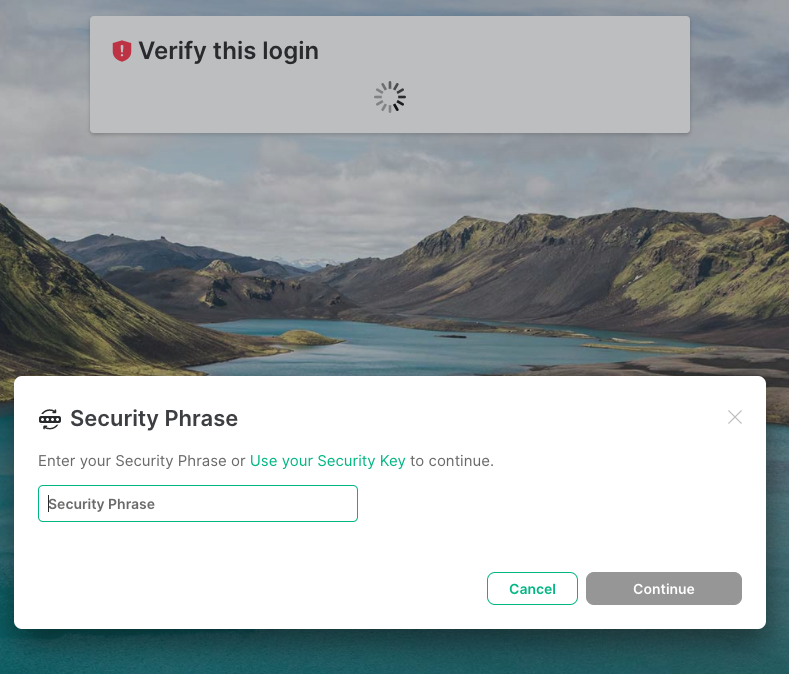
If entering in a generated security key, the prompt looks like this:

Upon correct input, the restore session is successfully verified:
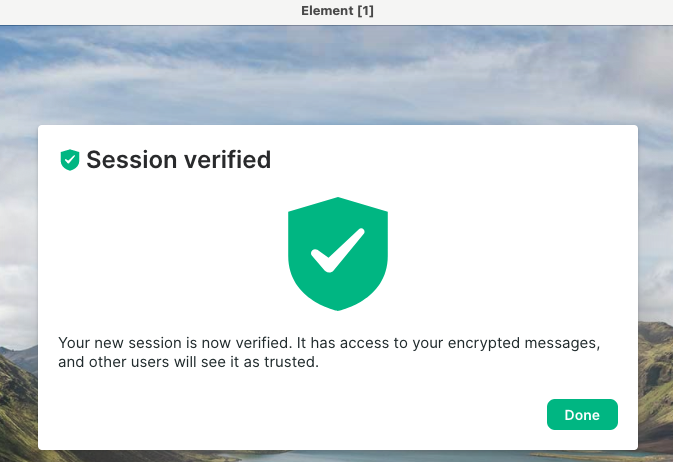
Now the Element chat client is used with encryption.
With each login to Element the following window appears:
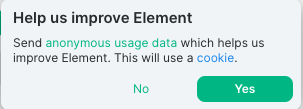
This question can be answered at will.
Webclient
For using the Webclient, see the manuel under clients -> browser
A registration of accounts (as known from other Matrix servers) is not possible at the Darmstadt University of Applied Sciences, because only persons with University login can use the service. The Darmstadt University of Applied Sciences is not a communication service provider.
For scientific cooperations with colleagues without a University account there is the possibility to apply for a university guest account, which also entitles to the use of Matrix.
However, the federation with the Matrix servers of other scientific or civil society institutions will soon be possible (analogous to the existing e-mail federation). Example servers with which communication is already possible are:
-
TU Freiberg incl. Docu
-
TU Chemnitz incl. Docu
-
Hochschule Darmstadt incl. Doku
-
Humboldt Uni Berlin incl. Docu
-
TU München incl. Docu
-
Uni Hannover incl. Docu
-
Uni Osnabrück incl. Docu
-
Ruhr Universität Bochum incl. Docu
-
Uni Heidelberg incl. Docu
-
Uni Augsburg incl. Docu
-
Uni Stuttgart incl. Docu
Students can use these servers:
-
StudiChat (für alle)
-
Fachschaften (für Fachschaften)
More European Universities:
-
ETH Zürich incl. Docu
-
Universität Innsbruck incl. Docu
A map displaying these listed servers is shown at “Why Matrix?".
For civil use of the Matrix protocol, here is a list of public home servers that can also be used by Kolleg:innen if their institution does not yet offer a Matrix server: https://www.hello-matrix.net/public_servers.php